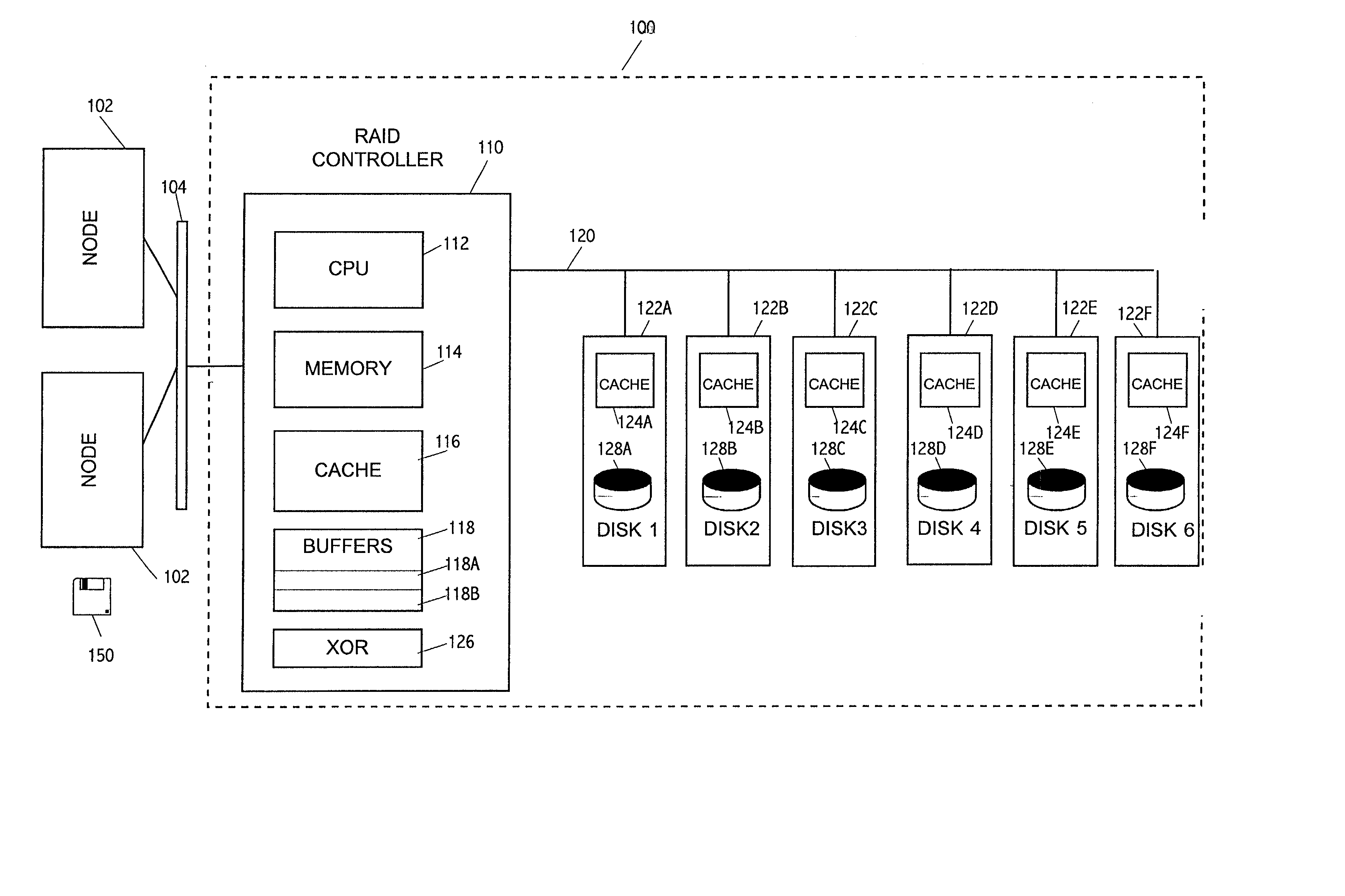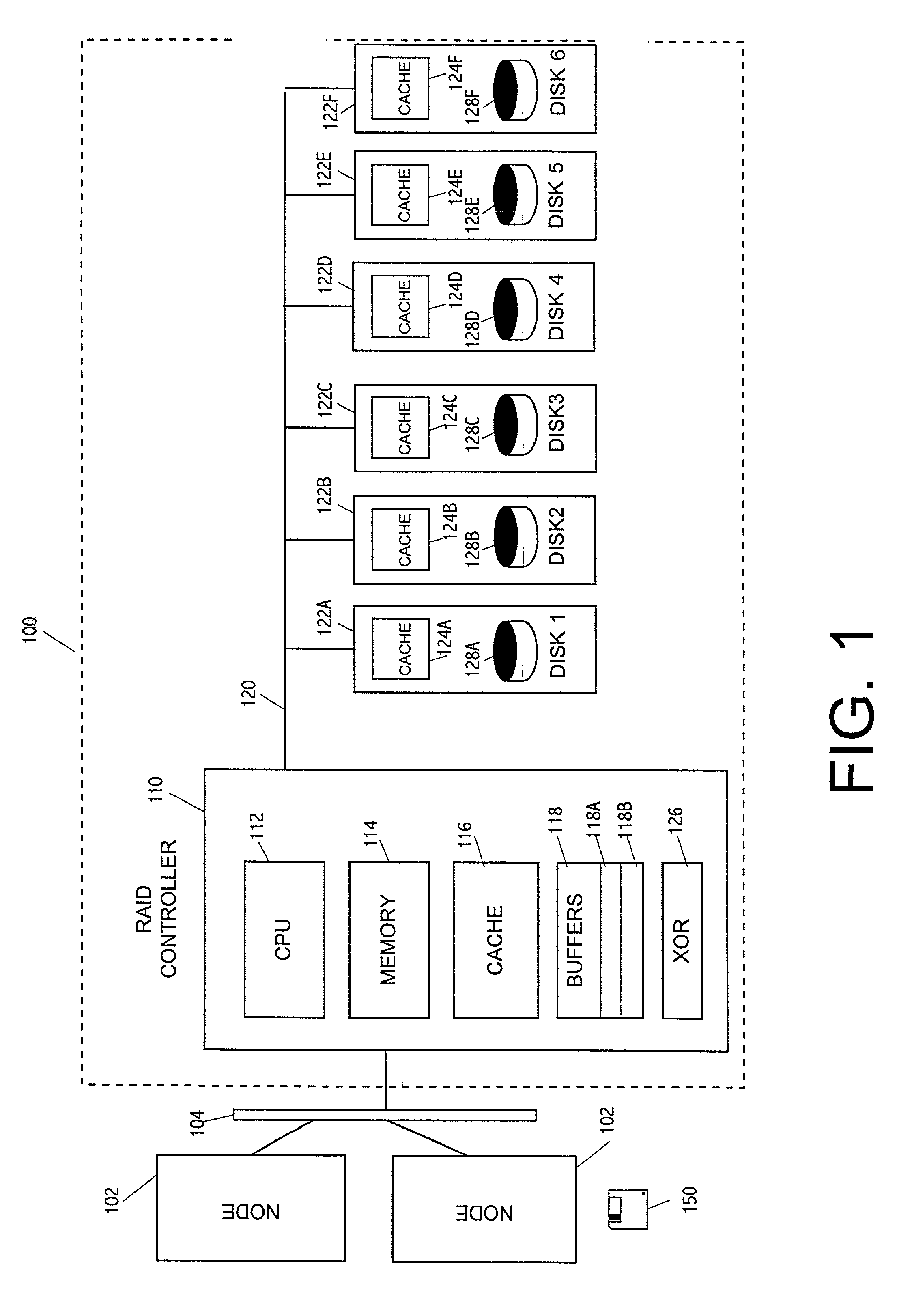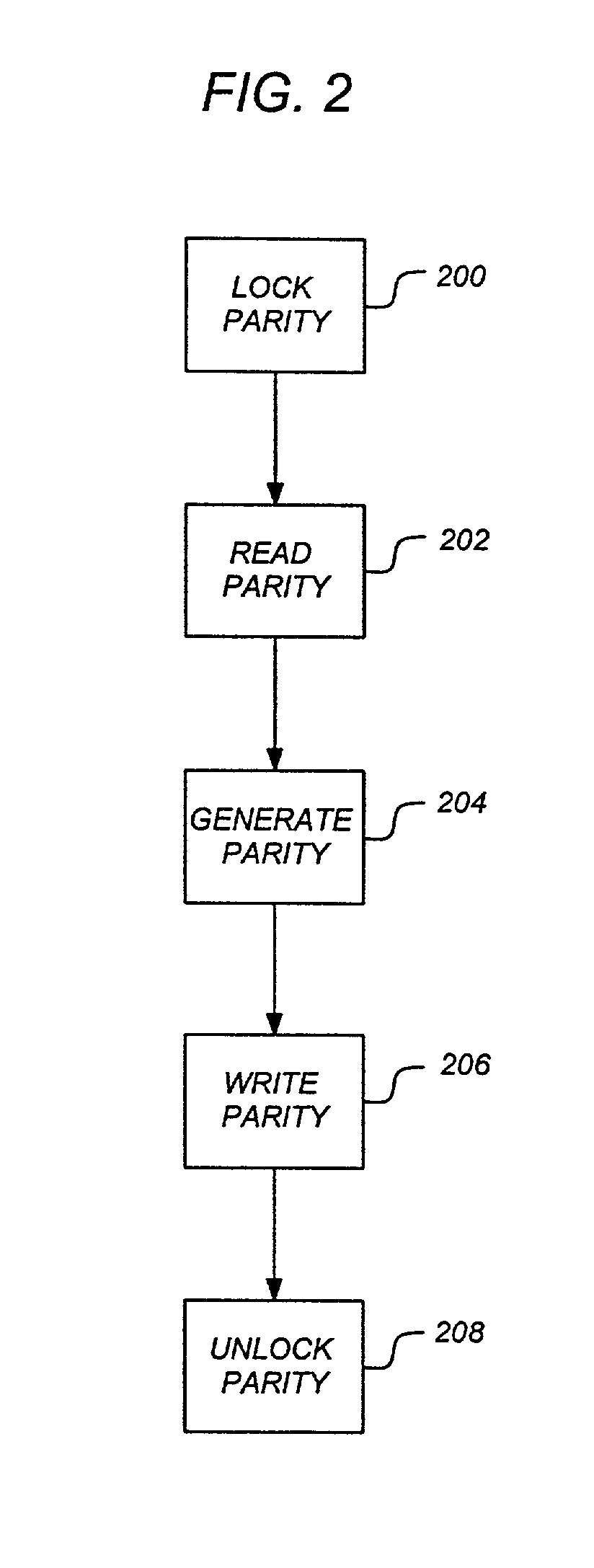Method and apparatus for supporting parity protected raid in a clustered environment
a clustered environment and parity protection technology, applied in the field of data storage systems, can solve the problems of high cost ratio of fault tolerant storage, difficult implementation of software raid-3 controllers, and the inability of the raid-0 to increase reliability
- Summary
- Abstract
- Description
- Claims
- Application Information
AI Technical Summary
Problems solved by technology
Method used
Image
Examples
Embodiment Construction
[0025] In the following description, reference is made to the accompanying drawings which form a part hereof, and which is shown, by way of illustration, several embodiments of the present invention. It is understood that other embodiments may be utilized and structural changes may be made without departing from the scope of the present invention.
Hardware Environment
[0026] FIG. 1 is a block diagram showing a hardware environment implementing one embodiment of the present invention. A RAID array 100 accepts commands from one or more nodes 100-102 (such as a host computer, another RAID array, or a disk 128 in a RAID array) via an interconnecting bus 104. These commands comprise, interalia, commands to write data to the RAID array 100 and commands to read data from the RAID array 100. Ordinarily, the smallest unit of data that can be written to and read from the RAID array 100 is one user sector, typically 512 bytes. One or more nodes 100-102 could be interconnected with the RAID array...
PUM
 Login to View More
Login to View More Abstract
Description
Claims
Application Information
 Login to View More
Login to View More - R&D
- Intellectual Property
- Life Sciences
- Materials
- Tech Scout
- Unparalleled Data Quality
- Higher Quality Content
- 60% Fewer Hallucinations
Browse by: Latest US Patents, China's latest patents, Technical Efficacy Thesaurus, Application Domain, Technology Topic, Popular Technical Reports.
© 2025 PatSnap. All rights reserved.Legal|Privacy policy|Modern Slavery Act Transparency Statement|Sitemap|About US| Contact US: help@patsnap.com



